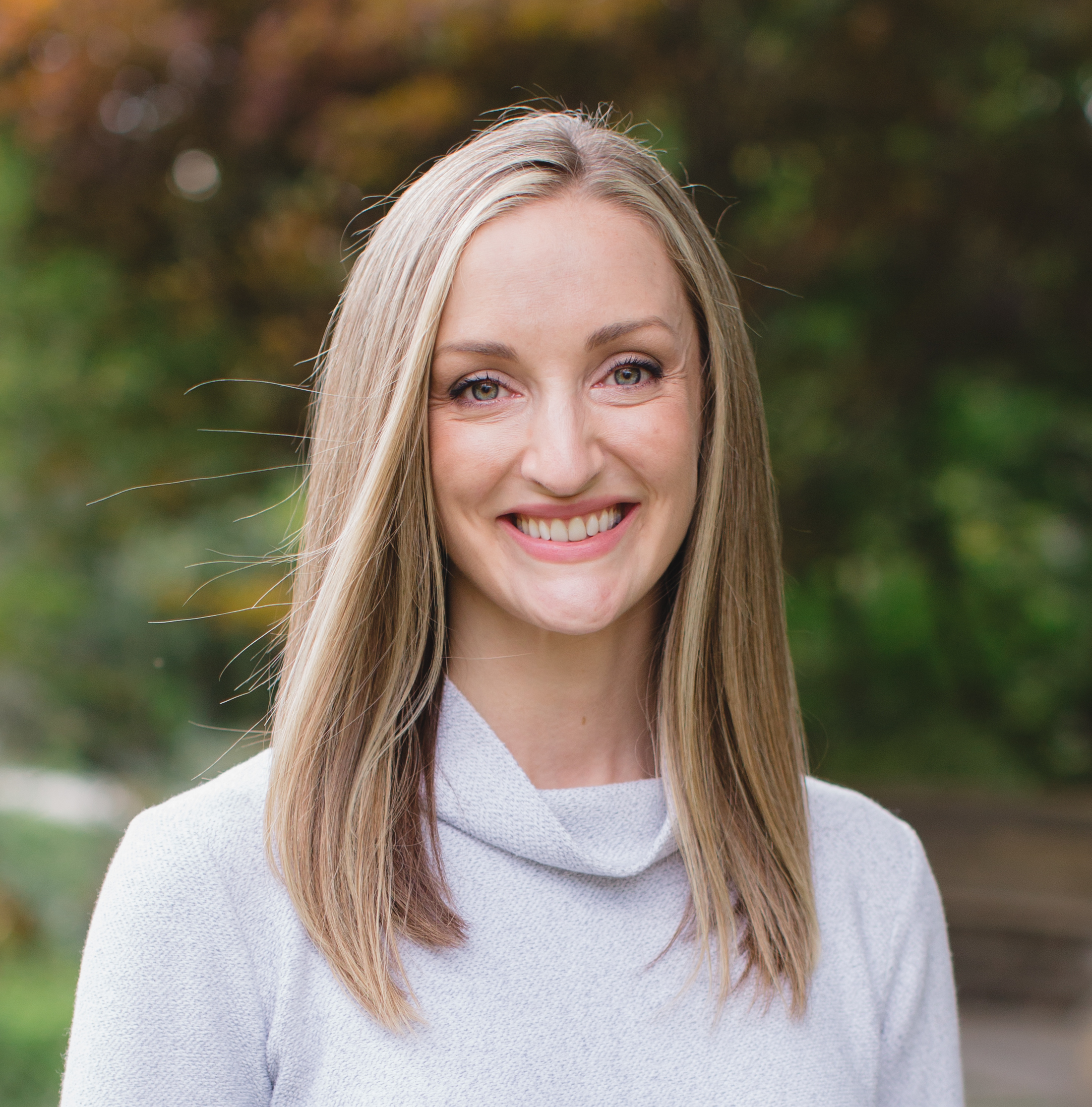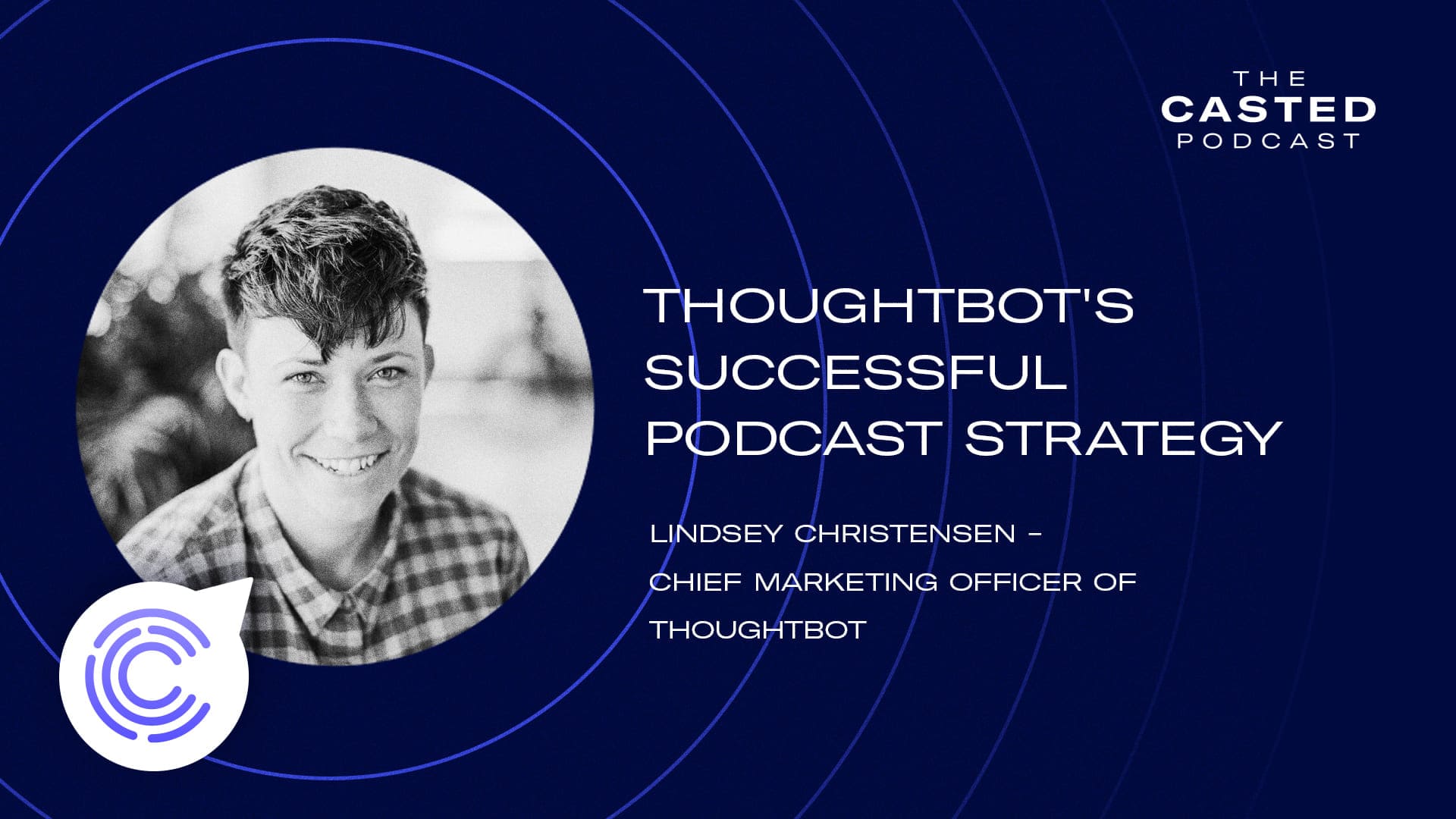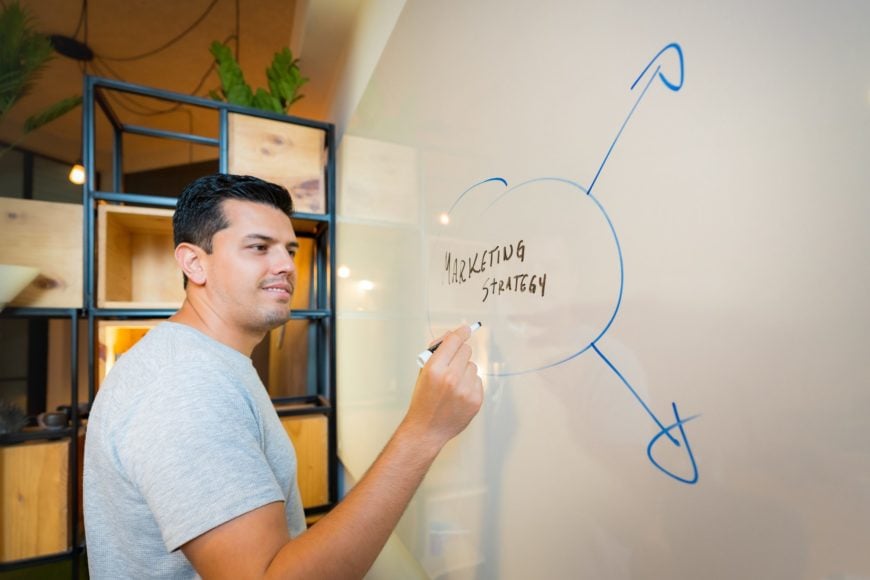Heike Young didn’t set out to be the host of one of the industry’s first B2B podcasts. It just sort of...happened.
The year was 2015 — right around the time Serial’s first season was at the top of everyone’s minds. The concept of B2B podcasts was still in its infancy, but a group of content innovators at Salesforce wanted to try their hand. Marketing strategists and digital evangelists Jeff Rohrs and Joel Book enlisted Heike’s help to produce the company’s first-ever podcast, the Marketing Cloudcast.
But after just a few episodes, Jeff decided to pursue another opportunity at a different company, leaving the show with only one host. Since Heike was already in all the production meetings, she was the natural choice for the show’s next heir. To prepare, Heike began exploring how elements from her own favorite podcasts could be activated in the B2B world.
But as you probably know, a business podcast takes a lot more than setting up a microphone and hitting record.
“A podcast sounds so easy; how hard could it possibly be?” says Heike. “On the contrary, all of us, especially in B2B, know there are so many more boxes to check off when you embark on a project like this. It’s not as simple as the best podcasters make it sound.”
Looking back, she realizes there were a few simple (but key) preparations her team made to not only resonate with the new B2B listener audience, but also to make the podcast the long-standing success it still is today.
1. Get Scrappy.
Though it’s relatively cheap to get started podcasting, there’s no shortage of “add-ons” and shiny things you can spend your money on to make it bigger and better. But since B2B podcasting is still in relatively uncharted waters, it’s a bit of an unproven channel in most marketing departments.
So how can you gain traction in the market without spending any money? Heike suggests utilizing free, organic channels like social media and your company’s blog in the early stages to get the word out and entice followers. Once your podcast gains enough listeners and clout, you’ll have the proof you need to pitch new, paid strategies like music licensing, commercials, transcription services, paid campaigns, and more to your superiors.
2. Act on Created Content.
Just like whitepapers and blogs, podcasts are a source of lasting content you can act on for thought leadership, lead generation, and sales support. That’s why Heike believes the distribution arm of any podcasting operation is just as important as the creation arm.
“There’s nothing worse than creating something amazing, and then nobody can help you promote it,” she says.
In the beginning, the Marketing Cloudcast set out to appeal to three separate audiences:
- Internal marketing
The goal was to tap into as many organic channels as possible (ranging from social to audiograms) in order to get buy-in from the team and set an example for how to successfully start a marketing program. - Internal sales
Not only do podcasts present fresh, engaging content for sales to share with prospects, but they also serve as an educational tool for reps themselves. Hearing positive feedback from sales about how much they were listening in gave Heike and team ammunition and reinforcement that their efforts were worthwhile. - Customers
Heike knew the company’s customers were marketers who were hungry for the types of thought leadership an innovative brand like Salesforce could provide. Plus, they would make ideal guests for the show, sharing stories from their own brands and experiences.
3. Create a Memorable Experience for Guests.
To secure the best guests, keep them coming back, and motivate them to share your content with their networks, Heike believes a VIP experience is essential. From scheduling the interview to sending a follow-up gift for their time, the guest must feel valued and appreciated for their presence. The real clincher? The interview itself.
“The interview is everything,” says Heike. “It’s where you get the great moments.”
To ensure a successful show and follow-up, she suggests podcasters:
- Be overly prepared. Do your homework on the guest.
- Ask new questions they’ve never answered before. (Think well-researched questions and conversations like in the popular YouTube show Hot Ones.)
- Treat guests like humans, not “interview robots,” to glean the most authentic moments.
4. Gather Feedback and Measure Results.
Podcast analytics weren’t always as readily available as they are today. When Marketing Cloudcast began, iTunes didn’t provide much more than the number of downloads for each episode. While more metrics like “duration listened to” and “listener region” are available today, it’s still important to go out and get your own results.
Heike suggests gathering as much listener feedback as you can, as early and often as possible. Whether through podcast comments, Google Forms, or email surveys, having feedback on what listeners want helps you tailor your content to their preferences, creating a loyal, long-term fan base. Heike points to podcaster Jay Acunzo, who conducts digital focus groups, using them as a testing ground to preview new content, bounce ideas, and gather feedback for the direction of the show. In addition, creating a show email list is an effective (and easy!) way to unlock long-term subscribership and build engagement with listeners on- and off-air.
Looking Back
Heike looks back fondly on the podcast and the relationships and success it generated. It was even awarded the Content Marketing Institute’s prize for Best Podcast in 2016 and Best Content Marketing Multi-Year Program in 2017. Heike has since moved on to roles in broader content strategy and insights at Salesforce, but the Marketing Cloudcast and the evergreen content it creates lives on.
“People love to go back and listen to their favorite shows from the beginning,” says Heike. “Knowing it continues to find an audience is so cool and what I’m most proud of in my career.”
Listen to the full podcast to hear more of Heike’s advice for kickstarting a B2B podcast and the lessons she learned from starting her own.





